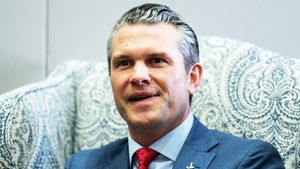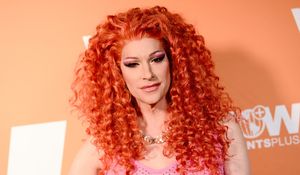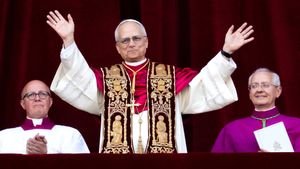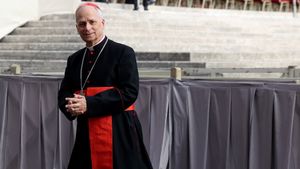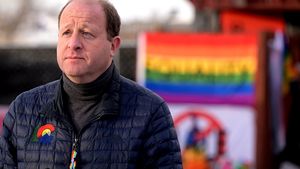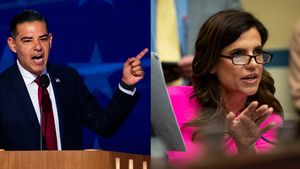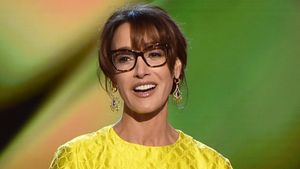This week, British Vogue, under the direction of editor-in-chief Edward Enninful, rolled out the cover of its latest September issue. Routinely called the most important issue of the year for fashion magazines, for the second year in a row Enninful decided to focus not on apparel, advertisers, or blockbuster celebrities, but the "changemakers" who are at the center of cultural and political change in this moment. That list of 20 stars included the likes of Janet Mock, Patrisse Cullors-Brignac, Angela Davis and more. And while many have lauded the project, even going so far as to call it historic as Mock became the second trans person to cover the magazine after Laverne Cox, Enninful also quietly etched another mark in fashion history. Texas Isaiah, the Brooklyn-born Los Angeles-based photographer who shot Mock, Cullors-Brignac, Jesse Williams, and Janaya Future Khan for the cover, became the first trans photographer to shoot for the cover of any Vogue edition. He was joined by Misan Harriman, Philip-Daniel Ducasse, and Eddie Hernandez in shooting for the various panels.
Here, we talk to the photographer about how the opportunity came about, how he approached the images, and what it means for a Black trans masculine photographer to control the gaze in a medium and genre that's long been directed by cisgender, white men.
How would you describe your typical artistic practice?
My artistic practice prioritizes Black and Brown individuals, especially trans and gender-expansive individuals, due to the widespread invisibility they experience in mainstream visual culture. My interest lies in how atmospheres transform intimacies between people and physical spaces and how that transformation manifests concerning their relationship with the camera.
How did this opportunity come about for you?
I'm not quite sure of the details beforehand, but the deputy photographic editor reached out to me to photograph six activists.
Was there anything you were referencing or that you had in mind when you were shooting the respective covers?
The publication gave me a mood board, but I typically create mini mood boards for each individual. Most of the images contained older black and white pictures of Black folks in the 40s and 50s, paintings by Lynette Yiadom-Boakye, and some black and white fashion images by numerous visual narrators. The images taken in the 40s and 50s were quite jovial, and I was reflecting on our inability to gather in public spaces. I was focused on Yiadom-Boakye's work because her paintings feature people lounging and resting in "traditional poses." I'm always attracted to works that explore the quotidian in some capacity.
Did you go in knowing that this would be making history? Did that in anyway impact the work?
I wasn't aware the images were going to be on a shared cover alongside other visual narrators. I assumed it was going to be a huge spread. So, I was surprised when I found out. However, as I was photographing everyone, I did tell myself, "I'm going to approach all of these sessions as if this was a cover session."
There's a lot about "firsts" and when it comes to queer and trans people "first known," and as you are now a part of it, what do you think about that conversation in general?
I wouldn't want to disregard any celebratory feelings anyone has who finds themselves in that position; however, it is bittersweet and very absurd. It reflects how deep institutional racism, homophobia, and transphobia has been and how much it has impacted creative careers and people's basic needs and resources. I imagine what my ancestors/trancestors could have done if they were afforded the space to exist. I reflect and keep it pumping because the goal is not to be considered the "first known" or "first" for a significant amount of time -- more Black, queer, and trans folks should have the opportunities they desire.
When I think about trans people in the context of the mainstream creative industries, trans folks are generally the muse and not the artist. And generally it's trans women specifically. So I wanted to ask the importance of shifting the gaze, and widening the type of people who are allowed to control it in this way.
This is an important question to reflect on because Black photographers do not produce the majority of images of Black and brown trans women. We are aware that most image-makers who are hired and prioritized in multiple industries are white visual narrators. Personally, a lot of the shifting I've been trying to activate is behind the scenes and asking questions about image production, especially of Black TLGBQIA+ folks. Is this space safe enough for someone to feel comfortable? Has this person been photographed before? WHO is on set? How are we confronting power dynamics on sets and during photo sessions? I don't merely photograph other folks, and feel like I have all the control over the images and the environment because the authority should be shared. Photography and the language it produces have been very harmful in the past. We have a lot more to interrogate as Black TLGBQIA+ individuals move into visual spaces, whether they are in front or behind the camera.
RELATED | Born Beautiful: A Short History of Trans Models In Fashion











